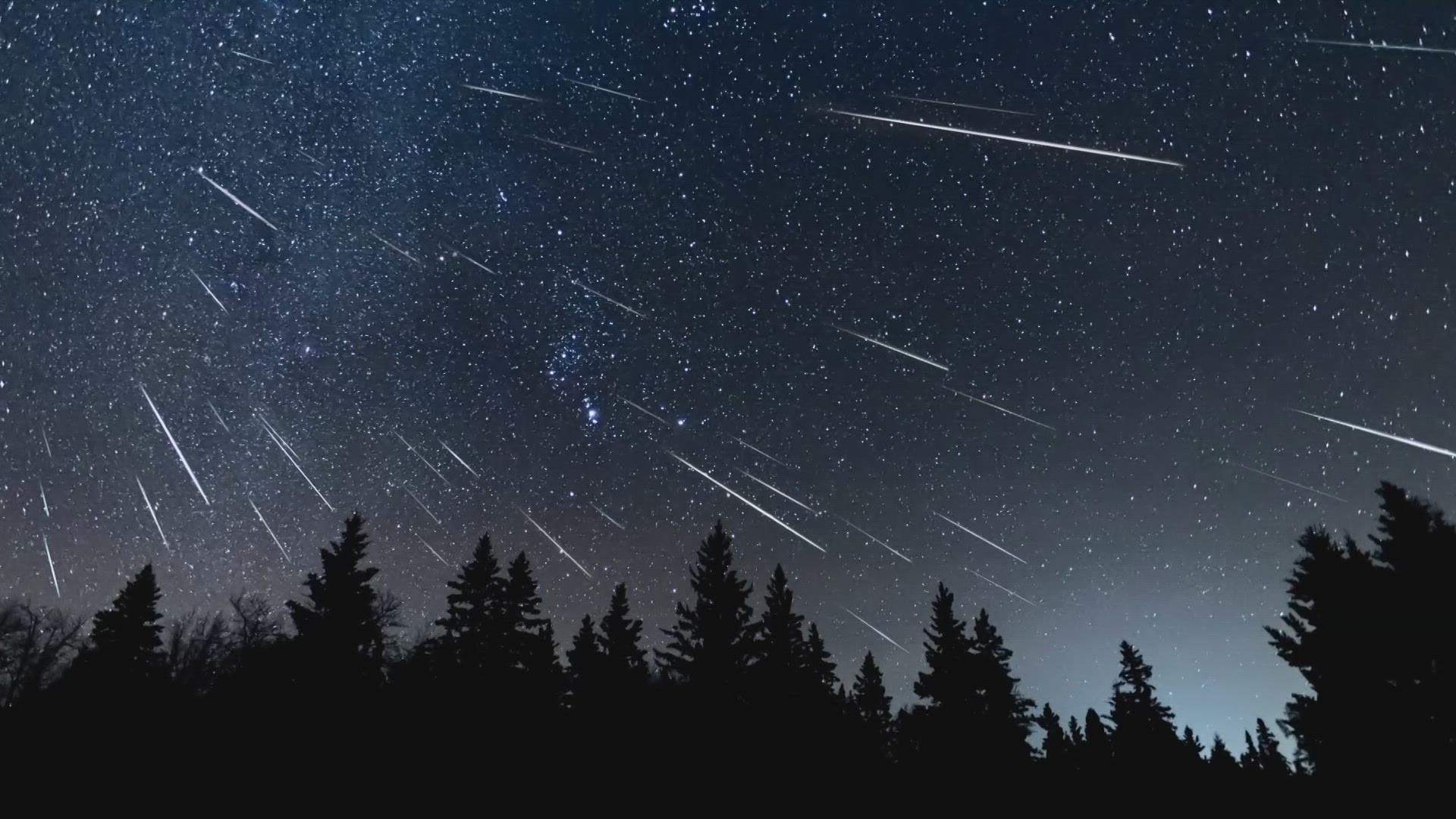DENVER — The Geminid meteor shower is the most active of all the meteor showers, producing about 120 meteors per hour, but weather conditions often make it one of the less appealing for skywatchers.
The peak of the shower is in the middle of December when winter storms can frequently block the view with cloud cover or bring frigid sub-zero temperatures, making it uncomfortable to sit outside during the overnight hours.
This year's peak will be on Thursday, just as a winter storm clears out of the state, meaning most Coloradans will get a good view.
"The actual peak will happen at about noon on Thursday," said Ron Hranac with the Denver Astronomical Society. "Most meteors can't be seen in the daylight unless they are huge, but fortunately, the Geminids has one of the longer peaks."
Hranac said the night before or the night after will still feature a peak number of meteors.
Geminid meteor shower weather conditions
The weather for late Wednesday night into Thursday morning does not look too favorable because the storm will likely not have cleared for most of us in the Colorado, with the exception of maybe some of the high mountain peaks in northern Colorado.
But the weather looks about as good as you can hope for Thursday night into Friday morning. Most of Colorado should have clear skies, with midnight temperatures between 27 degrees on the eastern plains and 25 degrees in the foothills at about 8,000 feet.
Geminid meteors: When and where to watch
Get as far away from light pollution as possible. If all you can only see is a few dozen stars, it is too bright to see the majority of meteors. Also get away from local lights. The glare from things like porchlights or nearby streetlights can be an even greater hinderance than the collective light pollution.
Hranac said the best time to watch for Geminid meteors this year will be Thursday night into Friday morning between 10 p.m. and 3 a.m. And give it some time because it can take up to 20 minutes just for your eyes to get accustomed to the darkness.
One part of the sky to watch is something called the radiant point, the area that the meteors appear to originate. The Geminids appear to come from the star known as Castor in the constellation Gemini.
"But my advice is to lay flat down and look straight up," Hranac said. "You will actually see more meteors if you look at their path longways instead of trying to focus on just the radiant."
The moon during the Geminid meteor shower
The moon will be in a favorable phase for viewing this year. The light from a full or near full moon can completely wash out meteor shower viewing except for just a few of the bigger ones.
The moon will only be a 2% illuminated waxing crescent and will set shortly after dark at 6:15 p.m.
How many meteors will you see?
The Zenithal Hourly Rate (ZHR) for the Geminids is 120. That the maximum viewable meteors possible in one hour under the perfect viewing conditions. The moonlight and the weather conditions are nearly perfect, but most people won't be able to get to an area with a completely dark sky.
"But the Geminids is a prolific producer of meteors," Hranac said. "If you can get even slightly away from light pollution, you are going to see a substantial number of meteors."
He said a reasonable expectation might be 10 to 50 per hour, depending on the location you choose.
How big are meteors?
Most meteor showers happen when the earth passes through the trail of a comet, but the Geminids are the debris from an asteroid called 3200 Phaeton. So the particles can be a little larger and denser than comet dust, potentially producing a brighter meteor.
"But you might be surprised that the vast majority of meteors that we see, even during the Geminids, are produced by meteoroids that are no bigger than a grain of sand or maybe the size of a pea or a pebble," Hranac said. "And almost of them burn up in the earth's atmosphere about 50 to 75 mile above the earth."
More stories by Cory Reppenhagen:
SUGGESTED VIDEOS: Latest from 9NEWS
9NEWS+ has multiple live daily shows including 9NEWS Mornings, Next with Kyle Clark and 9NEWS+ Daily, an original streaming program. 9NEWS+ is where you can watch live breaking news, weather updates, and press conferences. You can also replay recent newscasts and find videos on demand of our top stories, local politics, investigations and Colorado specific features.
To download 9NEWS+ on Roku search for KUSA.
To download 9NEWS+ on Fire TV search for 9NEWS.

